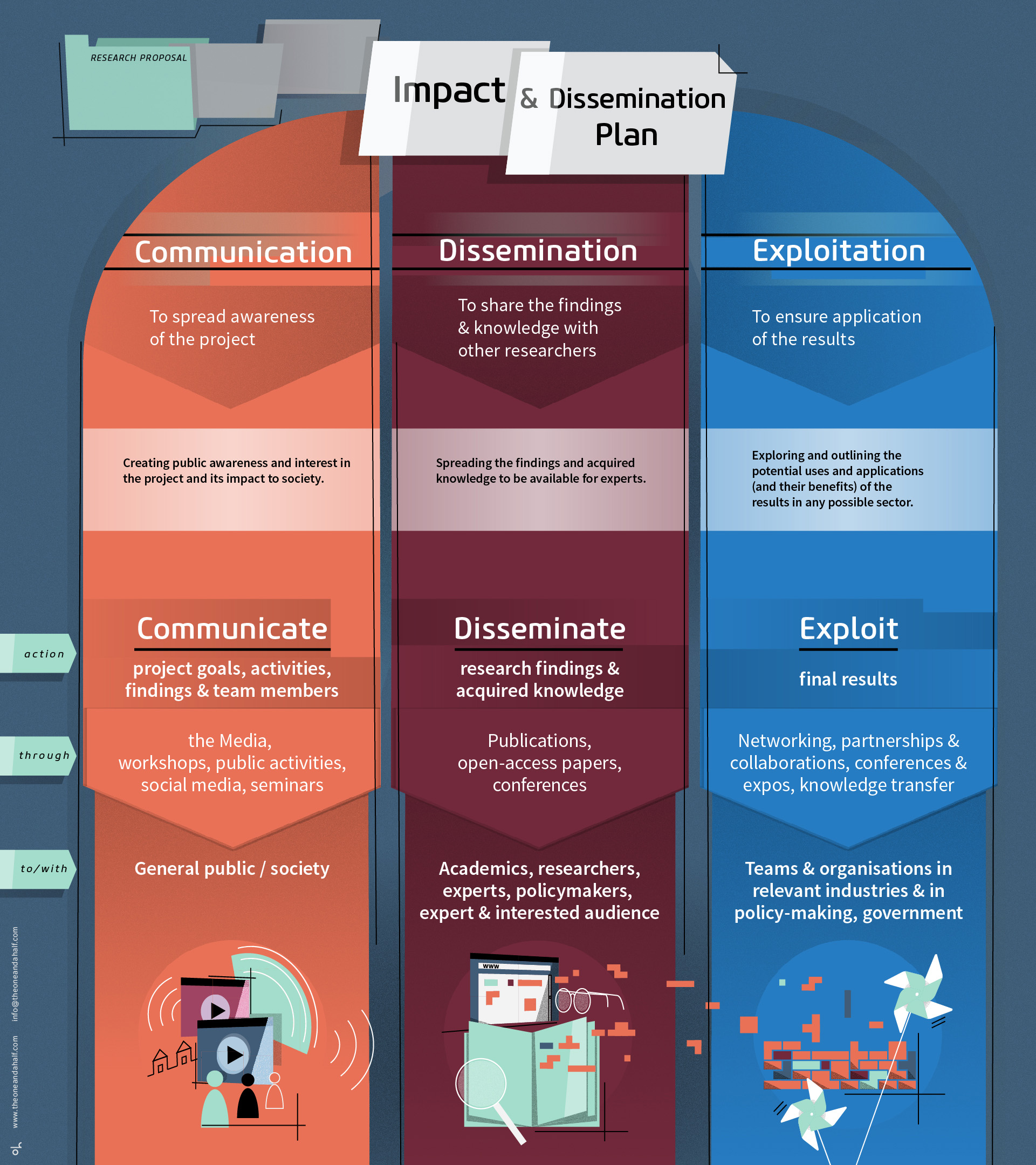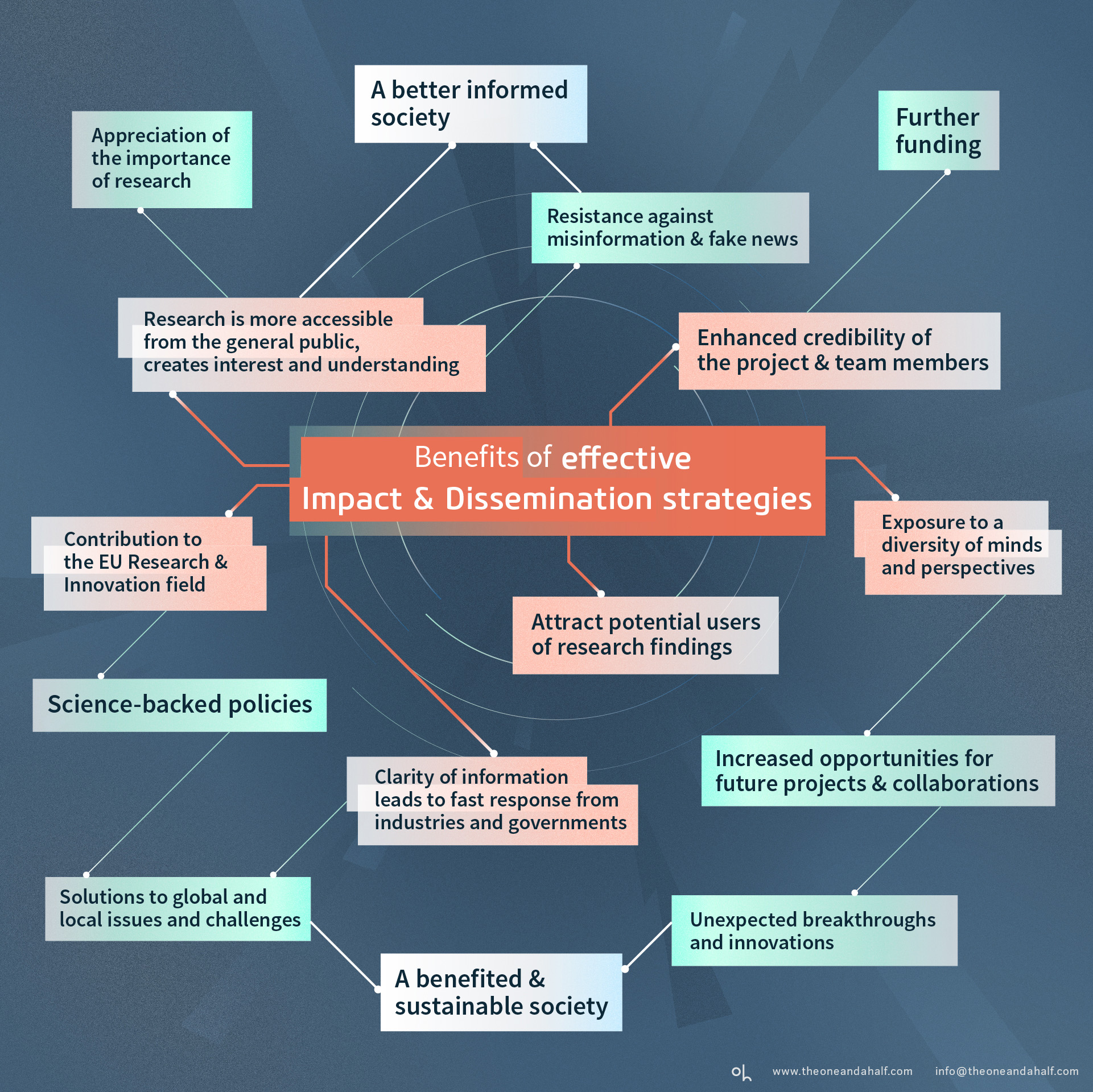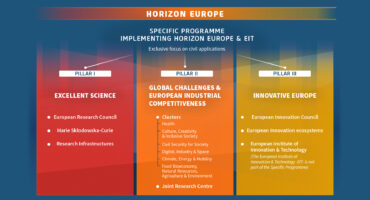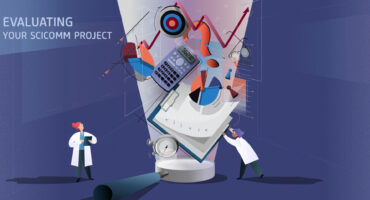Do you want to write a winning research proposal?
Written by Luiza Beirão Campos / Science communicator for one and a half


We make animations, motion graphics and illustrations for your audio-visual communication needs.
Phone: +357 99 658134
Email: info@theoneandahalf.com
One And a Half
28 General Timayia Avenue Kyriakos Building - Block A - Office 301 Larnaca, Larnaca, 6046

Little do we know while training to become researchers, that proposal writing will be a fundamental skill that will help us get jobs and develop our careers. We spend a significant portion of our time writing and submitting research proposals throughout the course of our careers.
In an attempt to guarantee the best use of research for innovation and societal solutions, there has been an effort in recent years, by funding agencies, to add mandatory project outreach deliverables. Many large European programs such as Erasmus, Horizon 2020, Horizon Europe and the Life Programme ask researchers to put greater focus on the Impact and Dissemination section of their project proposals.
It makes sense. Money from most funding agencies comes from taxpayers. It seems reasonable to ask that any outcomes from research should reach everyone who could benefit from it. Including governments, policy makers and the general public. Often, there is no interchange of knowledge between academia and the various stakeholders, with projects and research findings being restricted to scientific circles. Therefore, missions, objectives and results may not align with the needs of industry, government, and society.
Research results are mostly shared through scientific publications and conferences. This form of outreach usually consists of complex language and may be difficult to understand even for researchers. It is also costly. It is common to see scientific papers ranging from €10-40 for a download (an average researcher reads 50-70 scientific papers to write a new one). Universities pay subscriptions for their staff to have access to these, but unless you are affiliated with a university or research institute, this cost falls on you.
Project outreach, if performed effectively by project and innovation managers, can achieve greater engagement with wide audiences, while igniting opportunities of further funding, exposure and credibility not only on an organisational level, but also for the individual members.
A well thought-out Impact and Dissemination plan contributes to a higher scoring research proposal. Proposals with evident visibility, usability and reproducibility, have a better chance of being accepted by funding bodies. The main question one should answer while writing a proposal is: Why would the government fund this? Then justify by demonstrating throughout the whole project how it will be publicised and reach other sectors, users and further developments.
Usually, the impact and dissemination part of the project comprises of outreach actions related to three main aspects: Dissemination, Communication, and Exploitation. So, what are they about?

As researchers, we regularly engage in this scientist-to-scientist communication called dissemination. Writing and submitting the results to scientific journals for peer-review with publishing as the final objective. Once published, this knowledge is (in theory) available to all scientists around the globe and will contribute in expanding knowledge in a relevant topic. In a project, dissemination can take place once there are results worth publishing. This could be in the middle or by the end of the project, depending on the results available.
Communication foresees a conversation between the scientist and the public. Researchers undertake activities to share information on their projects and collect input from wider audiences. Using communication techniques, such as storytelling, PR activities and marketing strategies, through mediums such as videos, podcasts, social media, press releases and blogs, researchers can spread their knowledge , and provide much higher levels of engagement from the general public.
Communication should happen throughout the project timeline, engaging audiences who may be interested and benefit the most from the outcomes. As examples: sharing online oceanographic data collected with the wind offshore industry, communicating ecological data to the government aiding in preventing environmental damages, sharing the development of new online learning methods to be used in all levels of education, etc.
In addition, the media and general public may be informed on the objectives and missions of a given project, and get to know the people behind the scenes. Promoting personal stories and motivations of team members in undertaking research, can make science more human and approachable.
Research communication means making research accessible to all, showing how important the process, progress and results of your research are, in a way that is both accurate, engaging and easy to understand. And that is what project and innovation managers should aim for.
The exploitation part of a proposal encourages scientists to reach out beyond academia and explore how their research can be worthwhile and valuable to society. It is a guide on how the project's outcomes may be appropriated and applied in further research, development and innovation. Exploitation requires you to understand how, and work towards ensuring, your final results and deliverables can be used by different stakeholders.
Exploitation of your research can then be undertaken by multiple agents such as government, universities, other researchers, and industries. Anyone who can implement your results for commercial uses, policy creation, or further research.
Activities for exploitation could precede the project proposal, to foresee that the project is indeed fulfilling a demand and may be applicable. Networking, partnerships and collaborations between researchers and possible beneficiaries should be initiated throughout the project timeline, to provide opportunities for any adjustments and fine-tuning to ensure the best possible final results.
Having a satisfying outreach plan is not only crucial for the sake of the project’s approval and functioning, but can also be of extreme importance to society.
It is easy to see the importance of science propagation, especially during a pandemic. As early as January 2020, two months before Covid-19 being announced as a pandemic, the full genome of the virus was already available online for anyone to access. Many scientists and doctors around the world have and are still studying the mutations in the genome, symptoms, treatments, and every other aspect of the coronavirus. This has been crucial in the development of vaccines that the world is benefiting from.
Aside from the pandemic, the planet is facing pressing issues such as the climate catastrophe, that depends on a fast response from industries, business, and governments. Research results should reach these and other important stakeholders, not only by merely scientific publishing but through easily understandable, accessible, and reachable channels.
Communicating research projects to wide audiences is one of the many challenges researchers face. How can we create genuine interest in science so we can collectively develop more understanding about it? And how can our projects further help and support others in finding solutions to big problems?

Communicating our research projects with the world pushes us to get out of our comfort zones. Researchers can benefit from better promoting their work and themselves, leading to opportunities for public visibility, credibility, future citations and further funding. In addition, by engaging with wide audiences and being exposed to various perspectives may influence future projects and collaborations. Making studies more accessible may result in unexpected breakthroughs, innovations and applications by industry stakeholders. Governments can make better informed decisions on what projects to fund and better access to solutions to base their policies on. Ultimately benefiting the society as a whole, with science-based policy-making and a better informed population in regards to both the research, and on what taxes are spent on. This can create a deeper understanding and appreciation on the importance of research, leading to further support on funding research.
Science is creative and full of discoveries. By supporting science with visually engaging and creative methods we can reach and engage with large audiences. Research could advance tremendously by applying multidisciplinarity. There are benefits from having diverse voices being heard from different disciplines such as communication, policy and arts to name a few. By listening to the needs and interests of others, we can find common ground and face future challenges ahead. No pressing question—social, economic, technological, or scientific—can be answered from a single perspective or discipline or by a single type of institution.
At the end of the day, research is about the public interest. As researchers we strive to understand and make sense of the world around us for the benefit of humanity. We should always keep this in mind when being involved in research and innovation.
At one and a half, we are passionate about research communications and getting your findings seen.
If you are curious about how your research project can benefit from animation, contact us today for a free consultation at info@theoneandahalf.com OR here.
Illustrations and infographics by Christina Kalli.
Written by Luiza Beirão Campos


